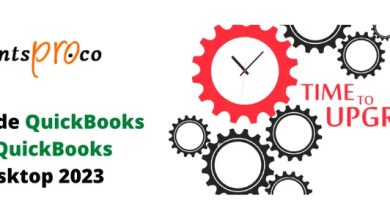
Enterprise software spending in Best Software Development Companies will reach $675 billion in 2022, up 11% from the previous year. The market for corporate software is expanding as a direct result. The data unmistakably demonstrates that the market for enterprise software is expanding more quickly.
If you intend to develop software for your company, you need to be well-versed in the agile development process.
We contacted our knowledgeable software development team to better understand the process so that we could explain it to you. This manual provides comprehensive information on the SDLC as well as the step-by-step software development process.
What is SDLC (Software Development Life Cycle)?
The goal of the SDLC is to create great software that goes above and beyond what clients anticipate.
However, let’s first define the software development process in order to grasp the SDLC.
The software development process is an organised method for collaborating to improve and create projects, designs, and products.
Understanding the SDLC will be simpler for you once you fully get what custom software development entails.
To better help you grasp the overall procedure, we have included the steps of the software development lifecycle in the following table.
The software industry employs SDLC because it facilitates the software creation process and helps to produce high-quality software to fulfil client expectations while finishing software development within the allocated budget and timetable.
6 Stages of Software Development Process
Plan resources and do requirement analysis
The most important phase of software development is planning. You as the project manager may have conducted a requirement analysis for your project, but you will require software engineering professionals to establish a software development strategy.
You must determine whether the software you intend to create will help you achieve your professional or personal objectives. This examination looks at prerequisites. Any programme is designed to make chores simpler. Therefore, you must determine the duties you are attempting to optimise and the advantages of developing custom software.
Resources must then be set aside for the software development process. What kind of resources you will require to finish it must be determined. The quantity of project managers, software engineers, designers, tools, and technologies that will be needed can all be planned. The next step is to develop a flexible budget that is also justifiable.
Create a design and a prototype to specify the entire workflow.
After the analysis and planning phase is complete, it’s time to begin developing the product’s software architecture. The entire process of developing software will be outlined by this architecture or design. In terms of software, the design has to do with the entire functionality and user experience as well as the appearance.
As you must communicate to the software designers what you require from the application, you can have a significant impact on the design process. How users will engage with the software application or product might be specified. Using various technologies like Adobe and InVision, the designers will create straightforward wireframes to demonstrate these interactions. You can also order full-fledged prototypes that showcase all of the product’s features if necessary.
You can now determine whether there are any shortcomings or feature gaps. When everything is ready, you may start developing and make adjustments with ease throughout this phase.
Start Software Development After Receiving Complete Requirements
When you are totally certain of the requirements and on board with the design and functionality, development in the software process can start. By creating the appropriate code, the development team gets to work creating a programme.
Currently, development is done in a variety of ways depending on the kind of software required. In the section below on software development life cycle models, you will see how it works.
Check the Entire Working of Software in Testing Phase
In reality, testing happens concurrently with development as part of a continuous software development process. Under the quick development process, testing is carried out to evaluate the product’s usability, stability, and functionality.
A group of quality assurance testers, or QA testers, work for us. Every piece of code written by the software development team is tested by this team. To check for faults or malfunctions, this is done manually and with the use of automated tools.
Later, errors are corrected by modifying the original code or by adding fresh code. We guarantee that your finished product has all the specified features and functionality and functions without a hitch on your selected devices.
Deploy the Software Once the Testing is Completed
The critical phase of the software development life cycle is the software deployment process. Deploying your software on the required servers and devices comes after coding and testing are complete. This is only carried out once you have given your approval for the product’s operation and stability.
The product frequently receives an Alpha release. Only a few customers use the product and provide comments. The software is modified upon analysis of the feedback, and a beta release is subsequently made available. The software package is now accessible to more users.
Maintain and Update Your Software Regularly
As previously said, software development follows a cycle. The process of developing software is iterative. The procedure is not over after the product is launched. You must monitor software maintenance and keep it updated. Software development needs to be continuously monitored, and adjustments should be suggested as needed.
This is carried out because software products must be updated in order to stay up with the rapid advancement of technology. Users’ needs evolve over time when new ones are discovered. The development of any software product’s future updates also heavily relies on customer feedback.




